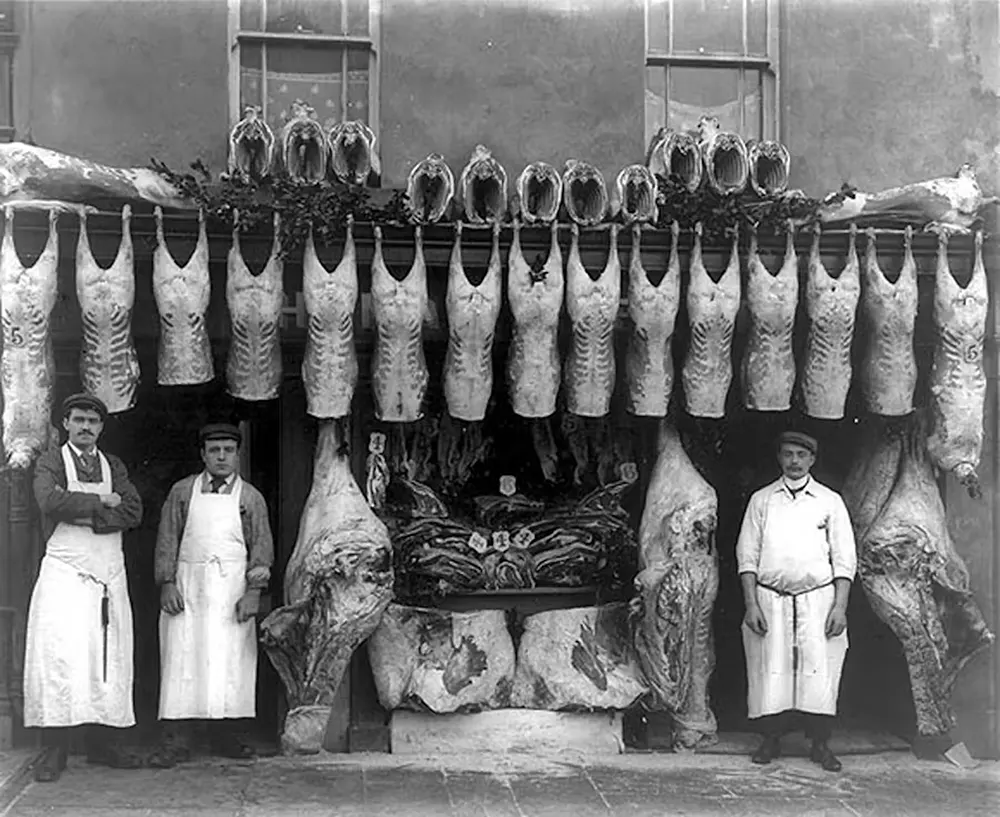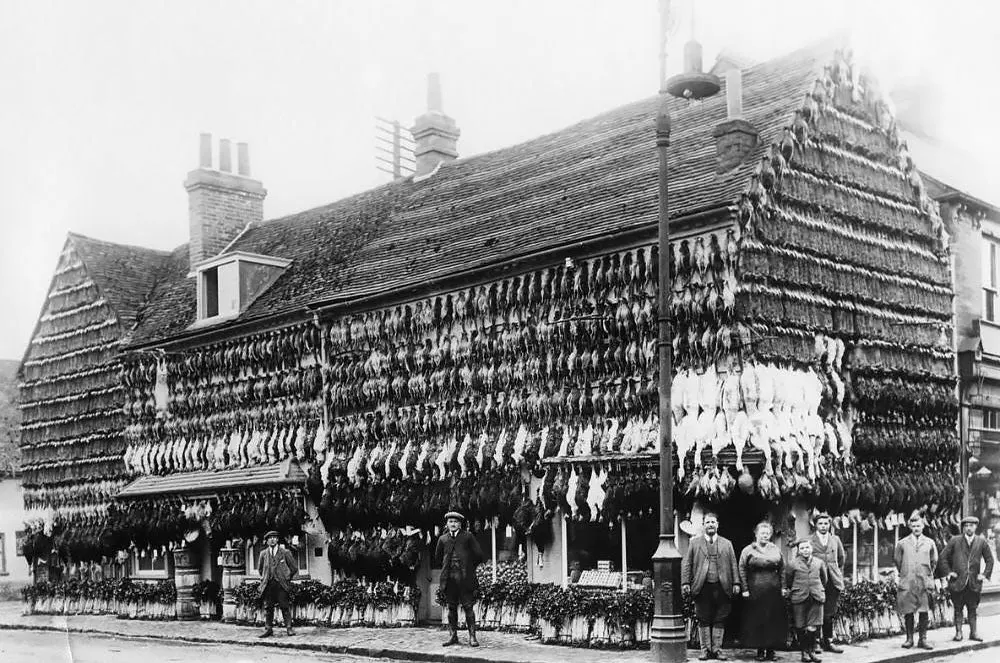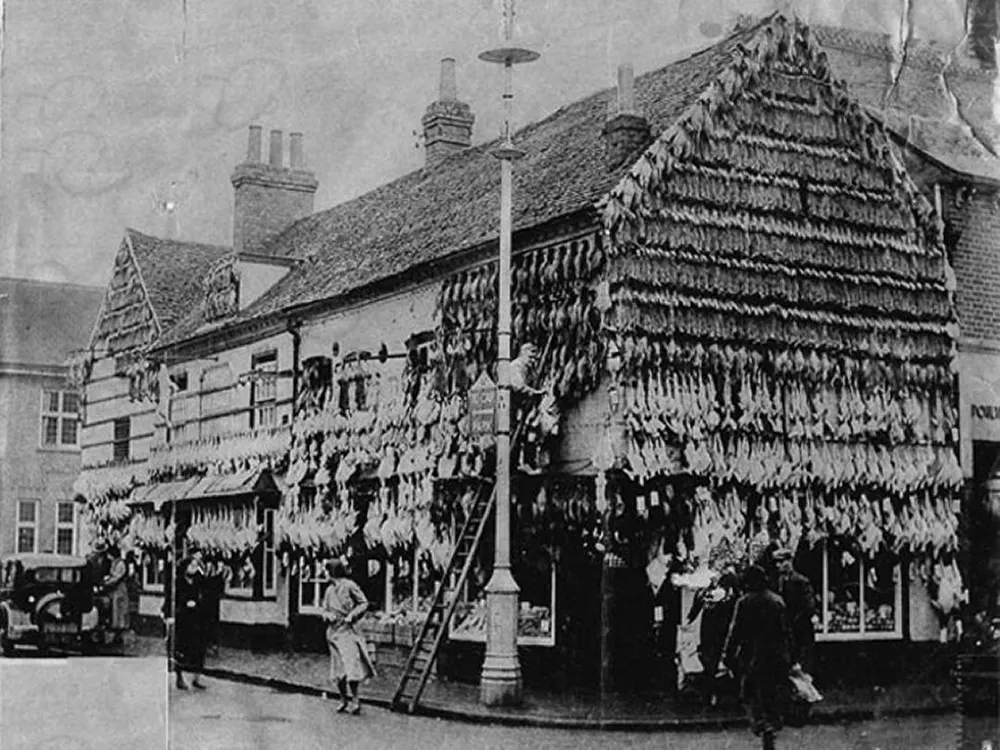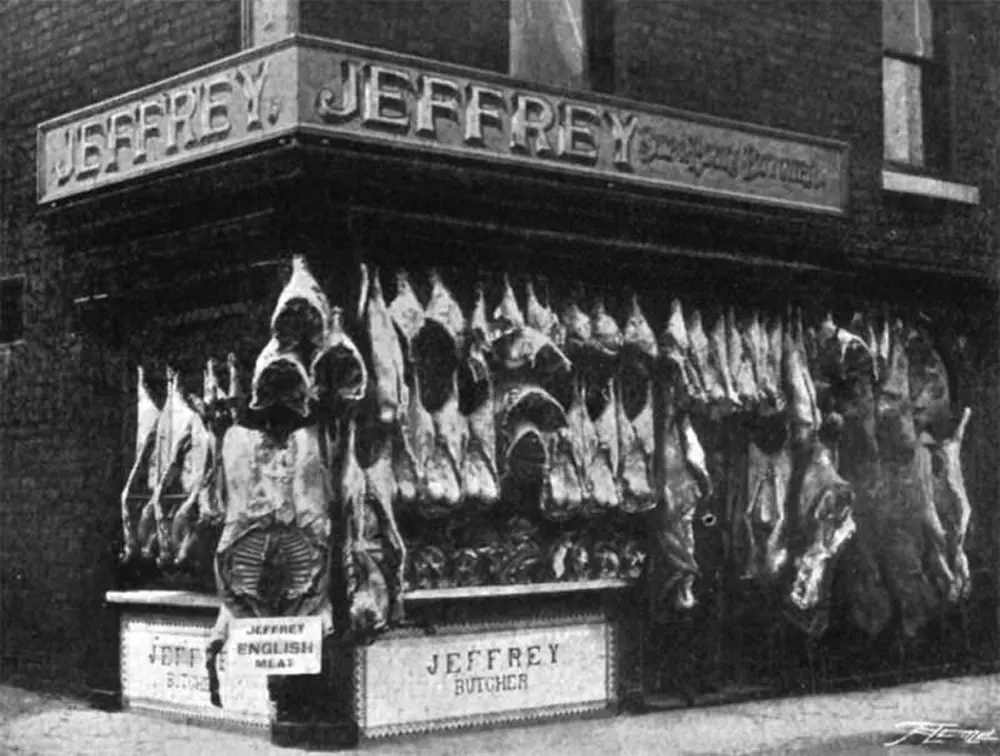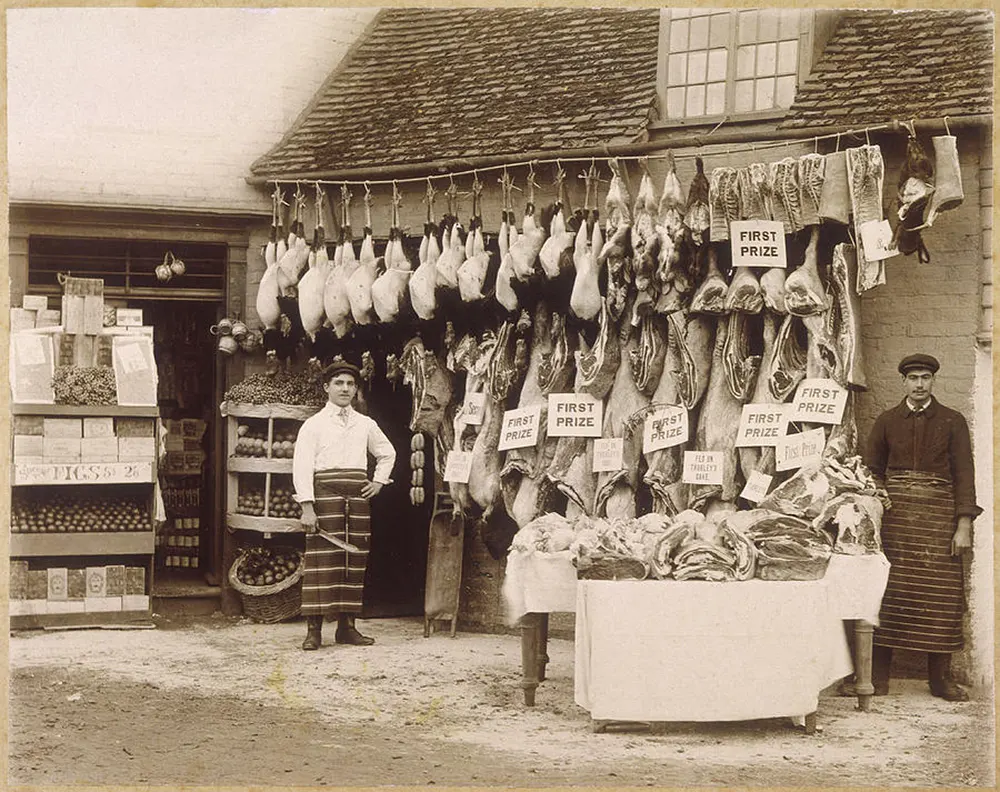Eating meat became popular across all sections of society during the Victorian era. Increased urbanization meant that people as a whole became more dependent on butchers and butcher shops, and the cost of meat was relatively far lower than it had been in previous generations. A lot of the cuts and roasting joints still used today began to appear, and there were products that could be sold for all budgets. Salted fat and bones were popular among the poorer members of society to add flavor and much needed calories to soups and stews, as well as the cheapest cuts of meat available, while the wealthy often indulged in roasting joints, the larger the better. The lack of fridges meant that a trip to the butcher’s shop was a regular occurrence for most and combined with all of the above, butchers were busier than ever. According to Thomas Miller in 1852, first, you would have to step over the gutter before the door, which literally ‘ran with blood’). And be mindful of all those carcasses hanging on the outside of the shop. As these photographs from the time show the astonishing displays of plucked fowl and the sawn-in-half bodies of pigs and cows pierced on hooks all over the outer shop walls. It was certainly not for the squeamish. Back in Victorian times, these displays would be a common sight. Unlike nowadays, High Streets of all sizes in the 1800s and early 1900s had butcher’s shops, and often more than one. Many would specialize, and a pork butcher was especially popular due to the fact that almost every part of the pig could be utilized. Most shops had also been in the same family for decades, if not centuries, earning their reputations. Businesses would shout about where they sourced their meat, and were proud to sell local produce, the animals coming from nearby farms. At Christmas time, huge, tantalizing displays were created to entice customers, some so magnificent that they were reported on in the local papers, and these reports would include where the meat had been sourced from and any prizes it might have attained. In a time of no refrigerators, salting and smoking meat was a good method of preservation. Yet, Victorians liked their meat a little aged, and sausages, for example, were hung in the windows for much longer than they are nowadays. Apparently, this made them taste better. By the end of the century, ice boxes began to be used. Inside the shop, you would see a butcher with his ‘bare muscular arms’ (according to Thomas Miller’s account). You might find yourself a little confused as this butcher conversed with his assistant, for butchers were famed for their backslang. This was a language made up of reversed words (‘boy’ would be ‘yob’, for example) which enabled the butcher and assistant to talk without the customer understanding. Why? So they might charge different prices. It was known for butchers to price their meat according to what they thought they could get away with. Despite this rather salubrious trait, butchers tried to be clean. Fresh sawdust was put down each morning to soak up the spills of blood and cleared away at the end of the day. By the start of the twentieth century at least, butcher’s shop walls were tiled for better hygiene, and chopping boards and knives were scrubbed and washed at the end of each day. The beginning of the 20th century saw huge improvements for the local butcher, with the industrial use of refrigeration and health and safety acts being implemented, the butcher continued to thrive, even during the war when meat was rationed. However, this all began to change with the introduction of the supermarket in the late 1940s. By the time the 60s arrived, several supermarkets had opened across the country, and we began to see a decline in local butcher services, with some being forced to close. Supermarkets removed the need for interaction, you could buy all you required in one place, removing the need for the baker, greengrocer, and butcher as separate entities.
(Photo credit: A Victorian Butcher’s Shop by Delphine Woods / Campbells Meat / Wikimedia Commons / Britannica). Notify me of new posts by email.
Δ Subscribe

